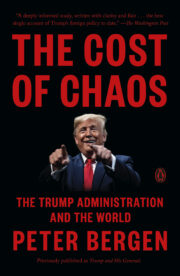Articles
In late May, some 40 Pakistani journalists received a summons to an unusual press conference given by Baitullah Mehsud, the rarely photographed leader of the Pakistani Taliban, who is accused of orchestrating the 2007 assassination of Benazir Bhutto, of sending suicide bombers to Spain earlier this year, and of dispatching an army of fighters into Afghanistan to attack U. S. and NATO forces in recent months. Surrounded by a posse of heavily armed Taliban guards, Mehsud boasted that he had hundreds of trained suicide bombers ready for martyrdom.
If the 20th century really began with the assassination of Archduke Ferdinand in August 1914, which set in motion the start of a series of intra state wars so brutal they killed tens of millions, then surely the beginning of this century was announced by the attacks of September 11, the harbinger of a new kind of war waged with spectacular acts of terrorism by non-state20groups that seem likely to be a defining feature of the century to come.
Two decades after al-Qaeda was founded in the Pakistani border city of Peshawar by Osama bin Laden and a handful of veterans of the war against the Soviets in Afghanistan, the group is more famous and feared than ever. But its grand project — to transform the Muslim world into a militant Islamist caliphate — has been, by any measure, a resounding failure.
Binnen Minuten nach Noman Benotmans Ankunft in der Herberge in Kandahar kam Osama Bin Laden herbeigeeilt, um ihn zu begru?en. Die Fahrt von Kabul hierher war anstrengend gewesen: 17 Stunden in einem Toyota-Pick-up, der uber das holperte, was als Hauptverbindungsstra?e zum sudlichen Afghanistan bezeichnet wird. In jenem Sommer 2000 war Benotman – seinerzeit einer der Anfuhrer einer Gruppe, die den libyschen Diktator Muammar Gaddafi sturzen wollte, von Bin Laden zu einer Versammlung von Gotteskriegern aus der gesamten arabischen Welt geladen worden. Es handelte sich um die erste Konferenz dieser Art, seitdem al-Qaida 1996 nach Afghanistan ausgewichen war. Benotman, Spross einer von Gaddafi entmachteten Aristokratenfamilie, kannte Bin Laden von ihrem gemeinsamen Kampf gegen die kommunistische Regierung Afghanistans in den fruhen 90er-Jahren. Damals hatte sich Benotman zu einem der Kopfe der militanten Libysch-Islamischen Kampfgruppe (LIFG) aufgeschwungen.
Does Osama bin Laden matter anymore? You could be forgiven for thinking he doesn’t. In recent months, an impressive cast of terrorism experts and counterterrorism officials around the world has coalesced around the notion that al-Qaeda’s leader is no longer an active threat to the West
In a great journalistic coup, Michael Ware and the CNN team in Iraq have unearthed the largest collection of al Qaeda in Iraq material outside the hands of the US military. What they found in this collection of videos and memos underlines a key aspect of the al Qaeda organization in Iraq; it is highly organized, and not simply a loosely-knit collection of jihadists.
Within a few minutes of Noman Benotman’s arrival at the Kandahar guest house, Osama bin Laden came to welcome him. The journey from Kabul had been hard, 17 hours in a Toyota pickup truck bumping along what passed as the main highway to southern Afghanistan.
In a speech in Ohio on Thursday John McCain laid out his vision for his putative presidency. Perhaps the most striking part was the claim that by the end of his four year-term in 2013 the global war on terrorism would be effectively over—Osama bin Laden and his key lieutenants would be behind bars or dead; al Qaeda would no longer have a safe haven on the Afghan-Pakistan border; the Taliban would be largely out of business; al Qaeda in Iraq defeated; the Iraq War “won,” and no major terrorist attack would have taken place in the United States.
Dude! What a rad plan! Kicking back over drinks at Bungalow 8, the hard-to-get-into Manhattan nightclub, filmmaker Morgan Spurlock hatched the idea of a humorous documentary and book about the hunt for Osama bin Laden. Your average auteur would wake up the next morning back in his Brooklyn crib, reach for the Advil and realize that searching for the largest mass murderer in U.S. history is about as funny as a pounding hangover.
For Pakistanis, the Dec. 27 assassination of Benazir Bhutto was the J.F.K. murder and 9/11 rolled into one, plunging the nation into days of mourning and setting off riots across the country. It was a stunning victory for Pakistan’s militants, who have increasingly turned their firepower against the state, conducting more than 50 suicide attacks in 2007 alone.
FEATURED BOOK

 Previous
Previous
